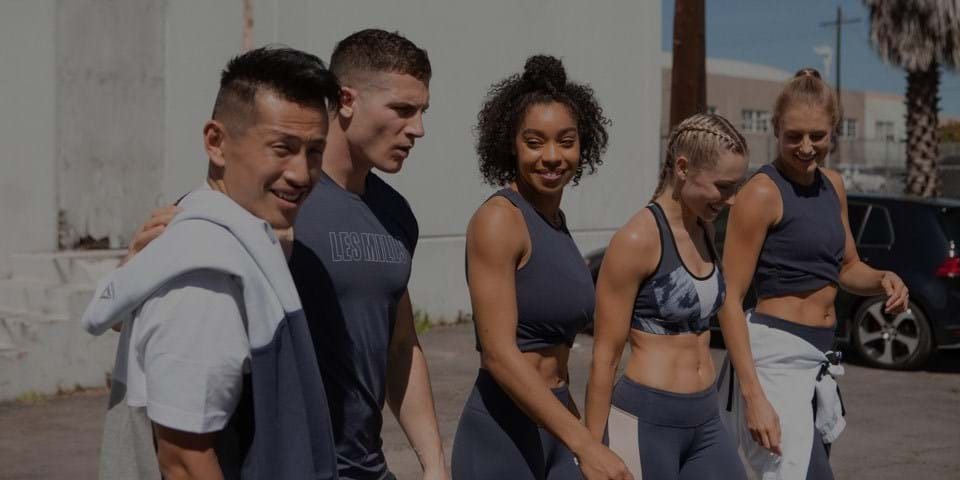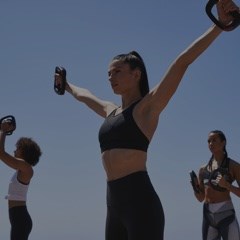When I’m teaching BODYCOMBAT™ or BODYJAM™, I keep my 'day job' kind of a secret. I’m a neurologist, and I’m sub-specialized in palliative care. I look after people with degenerative brain diseases such as dementia and Parkinson’s disease during their advanced stages, all the way through to death. Not exactly typical pre- or post- class chatter!
So I don’t talk about it. But at the same time, I can’t help but be aware of the work that our brains are doing during class. There is growing evidence that physical activity can improve learning and memory. And dance can improve movement and cognition in people with Parkinson’s disease. From what we know of the brain, you can expect that as you are exercising and hearing music your brain is working just as hard as your body, utilizing and strengthening the interconnected network of structures that coordinate movement, memory and language.
Your brain is a complex network connected by both chemical and electrical signals, and it is all working as you work out in a group setting. From the front to the back, from left to right, up and down through the brainstem, spinal cord, and peripheral nerves, the entire system is at work. You are continuously receiving sensory input from your eyes, ears, and body.
Your brain is receiving and sending countless signals, continually refining your motor output to get a good workout.
It starts with the music …
As the music enters your ears you hear and interpret the sounds, then – if you are familiar with the workout – you retrieve the corresponding memorized cues and choreography from your long-term memory. You then bring them to your working memory to use them in real time. Sensory input from your arms and legs travels from your peripheral nerves to your spinal cord, through the brainstem and into the brain, to be interpreted so you know where you are in space. You respond to that information with motor plans from the pre-frontal lobes to the motor cortex, then back down through the spinal cord and peripheral nerves to the muscles of your arms and legs.
Along the way, your cerebellum, tucked behind the back of your brain, is modifying information and providing coordination and balance so you don’t overshoot or undershoot your targets. While all of these things are going on, your brain is also handling the systems that keep your body temperature adjusted (allowing you to sweat the right amount at the right time), your heart pumping and your lungs expanding just enough and not too much.
And all of this is just the basic mechanics!
Even if you feel you haven’t reached peak performance, the brain power going on behind the scenes is remarkable.
Now layer on the emotional modulation and higher-level thinking that is occurring simultaneously. You might be nervous about the workout? Pumped about pushing your body to its limits? Or perhaps you’re going to try out something new that is a little scary? Well, say hello to the more elemental parts of your brain, the ones that modulate fear, anxiety, pleasure, and reward. They are working overtime.
For those up on stage instructing there’s all sorts of other activity going on too…
When an instructor sees you change your facial expression during class, the that visual input is received by their eyes, travels down the optic nerves and pathways, to the occipital lobe all the way in the back of their brain. There, patterns are recognized and categorized and the information is sent to multiple other areas of the brain, including the facial recognition and social networks. These allow the instructor to interpret that changed facial expression and to recognize if you are nervous, unsure, or frustrated. Then off this information goes, zooming back to the front of their brain where the pre-frontal lobes make a motor plan to change their own facial expression, as well as to the language centers to formulate the right words to say. That's some neurologic magic!
My advice is to always consider the challenging aspects of any workout as a success. So, next time you’re feeling awkward trying to kick, hit, or dance your way through BODYCOMBAT or BODYJAM, remember your brain is receiving and sending countless signals, and you are continually refining your motor output to get a good workout. Even if you feel you haven’t reached the peak performance you’re aiming for, the brain power going on behind the scenes is remarkable.
Your brain and your body are beautiful, incredible things, and for every one thing you think could be better, there are thousands of things that are working just fine! Keep improving. Keep training. But at the same time, know that your body and your brain are pretty incredible right now.
Farrah N. Daly MD MBA is a Neurologist, Palliative Medicine Specialist, and hospice medical director based in Virginia, USA. She teaches BODYCOMBAT and BODYJAM.







